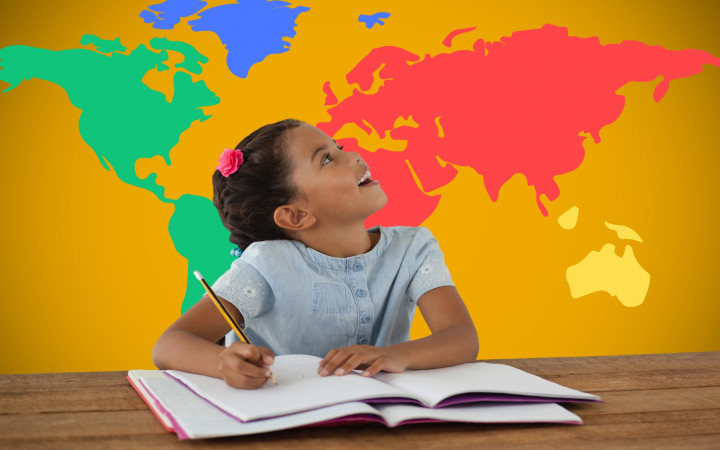Today’s Wonder of the Day was inspired by Maeve. Maeve Wonders, “Why are there only 7 continents?” Thanks for WONDERing with us, Maeve!
Let’s start this Wonder of the Day with a good laugh. Ready? Okay—what did the ocean wave say to the shore? Any ideas? It said . . . “Island-ed!” Ha! Get it?
Yes, we know ocean waves can’t talk. Still, that joke has us both laughing and WONDERing. What’s the difference between an island and a continent, anyway? And can an island ever become a continent?
You may have learned about islands in school. They’re landmasses surrounded on all sides by water. There are many islands on our planet. On the other hand, there are only seven (or eight, depending on who you ask) continents—and they’re also more difficult to define.
What makes a place a continent? Several factors help determine what’s a continent and what isn’t. For example, most of them sit on their own tectonic plate. The only current exceptions are Europe and Asia, which share a plate.
Continents also have their own unique forms of life. For instance, many plants and animals found in Australia aren’t seen in North America—you won’t find kangaroos hopping through the Grand Canyon! This further helps experts decide what’s a continent and what’s not.
Culture plays a role, too. When the people who live in a place have unique customs and traditions, that area is more likely to be called a continent. That’s one reason Europe and Asia are separated. They share a tectonic plate, but the people indigenous to each area are culturally different.
As you can see, places don’t need to meet all of these criteria to be called a continent. In fact, there’s no set definition of the word—this is just a list of things continents tend to have in common. This sometimes leads to confusion and disagreement about what truly makes a place a continent.
For example, many people WONDER why Greenland isn’t a continent. After all, it’s the world’s largest island, at about 836,000 square miles. It’s a large landmass in the middle of the ocean, much like the world’s smallest continent, Australia. However, there are several reasons why Greenland isn’t a continent. It doesn’t fit any of the criteria that most other continents have in common.
Greenland isn’t on its own tectonic plate—it shares one with North America. The plants and animals on the island are also largely found elsewhere in the Northern Hemisphere. Finally, the Inuits are the indigenous people of Greenland. They have many customs and traditions in common with the Inuits who live in Canada and Alaska. Therefore, Greenland is an island. It’s part of North America.
Could Greenland (or any island) become a continent? Perhaps. However, it would take eons—long enough for tectonic plates to shift. Life and culture on the island would also need to evolve, becoming unique to Greenland. No islands on Earth are likely to become continents in your lifetime.
Of course, the criteria for being a continent aren’t set in stone. They could change in the future. Based on what you know about the continents, how would you define them?
Standards: CCRA.R.4, CCRA.L.3, CCRA.L.6, CCRA.R.10, CCRA.R.1, CCRA.R.2, CCRA.W.2, CCRA.W.4, CCRA.W.9, CCRA.L.1, CCRA.L.2, CCRA.SL.1, CCRA.SL.2




